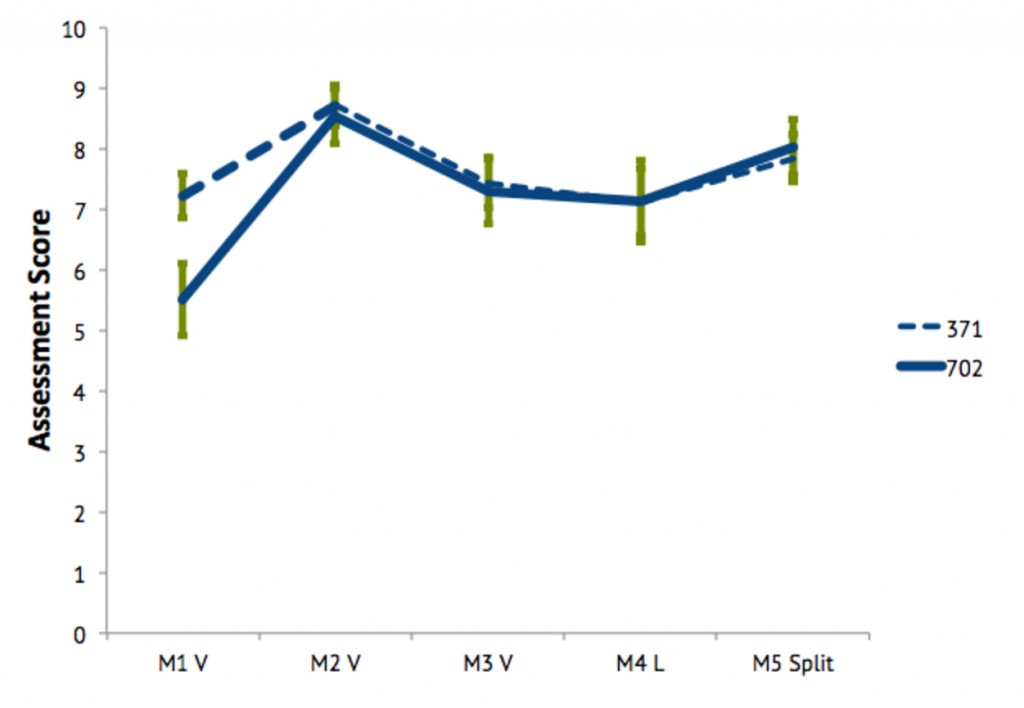During the summer and fall of 2015, the CIT led the Active Learning Faculty Fellowship. Nine faculty from a variety of disciplines shared experiences and learned about using active learning techniques in their classrooms.
In this guest blog post in our series about the Fellowship, Eric Green, Assistant Professor of the Practice of Global Health, describes new activities he used in his course.
If you are interested in getting ideas to bring more active learning into your own class, contact the CIT to talk with a consultant.
I signed up for the Active Learning Fellowship after flipping my course on global health research methods last year and realizing that I needed to rethink how to use my newfound classroom time effectively. The Fellowship was a great investment of my time, and it strengthened my resolve to stick with the flipped model. I walked away with some very practical new tools for making the most of classroom activities. But despite making some clear improvements to my course this Fall, I still had my flipped classroom skeptics.
Several weeks into the semester, students began approaching me at the end of class and saying something to the effect of, “I would do better (read: higher quiz scores) if you just lectured like normal.” Since I was teaching a course on research methods to two different groups of students, I decided that this was a good opportunity to take their research question—do live lectures improve learning outcomes compared to video lectures?—and run a test.
There was no way to randomize students to different teaching models, but that was OK because I needed to prepare a lecture on what designs you can use when randomization is not possible. I had two classes to work with: one undergraduate and one graduate MSc level course. I taught one class in the morning, and one class in the afternoon. One common limitation of quasi-experimental designs is what we call “non-equivalent” groups. Undergrad and grad students aren’t a good comparison, right?

In many ways no, but I set out to show students how you could go about building a case for causal inference when more rigorous designs are not possible. This chart shows that my MSc students were asleep at the wheel the first week but then both classes tracked pretty closely, moving up and down together.
Over the course of a few weeks I made a few tweaks to the schedule to setup the key lessons about quasi-experimental designs that I wanted to teach later on. For instance, the first week I switched both groups from video to live lectures. I’d later have the students explain to me why this “1-group pretest-posttest design” generates pretty weak evidence. The following week I switched one group back to a video lecture (ABA, or reversal design). Then I switched back to a live lecture again the following week (ABAB). The students were not aware of the reasons for my decisions to deliver the lecture in person or via video, and they generally seemed to appreciate the variety (maybe there’s a lesson here for me, too).
I presented a series of charts in my lecture on quasi-experimental designs that walked students through the pieces of evidence we had accumulated throughout the semester. To me the chart above is the most convincing. In addition to establishing that the two classes were pretty evenly matched, the last point shows no daylight between mean scores despite the fact that one group consumed the material for that module via video lecture while the other group joined me in-person for a live lecture.
Overall, live lectures appeared to be associated with a small (<15%) decrease in assessment scores, which seems plausible to me; there could be some small positive effect of letting students study when and where it’s convenient for them, and allowing them to pause and rewind at will. Maybe the bigger point, however, is that the average student probably does not do better when I “just lecture like normal”.
Flipping a course is not for everyone, but I really like that it opens up class time to pursue more active learning strategies. 8 out of 10 students agreed when polled anonymously at the end of the semester, but many said I still have work to do to get the in-class activities right. Active Learning Fellowship 2.0, anyone?

